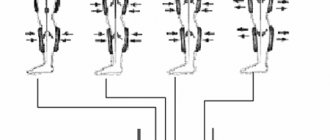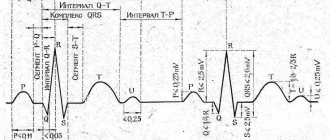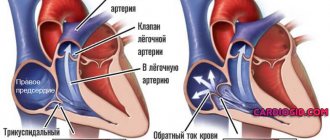Vascular surgeon of the City Clinical Hospital named after. S.S. Yudina talks about the benefits of stenting for atherosclerosis.
Why stenting is the optimal surgical solution to the problem within the framework of compulsory medical insurance, said the head of the department of X-ray surgery of the S.S. City Clinical Hospital. Yudin in Moscow Vitaly Mikhailovich Sysoev.
How is stenting different from coronary artery bypass grafting?
Stenting is a minimally invasive method for treating coronary heart disease. It is fundamentally different from bypass surgery in that it causes minimal trauma to the patient and has a short rehabilitation period.
A stent is an implant in the form of a frame that is installed in a vessel. It usually consists of a metal base on which a special polymer containing a medicinal substance is applied. The stent itself is mounted on a balloon catheter, which is necessary to deliver this frame to the affected area of the artery. Drug coating on the stent is necessary to ensure that it works as long as possible, so that restenosis, or repeated narrowing of the vessel after implantation, does not occur. Medicines that are applied to the stent prevent the growth of the so-called inner lining of the capillary, thereby preventing this segment of the artery from narrowing.
Stenting belongs to the category of high-tech operations.
How is stenting surgery performed?
Stenting, like coronary angiography, takes place under local anesthesia, which is very convenient for both the patient and the doctor: the person being operated on is conscious and can communicate.
The operation is performed through an injection into an artery in the arm or leg. Thus, a special catheter is delivered into the vessels of the heart, through which a contrast agent is injected so that the operating surgeon can determine which vessel is affected and what length and diameter of the stent must be selected in this case. After the doctor decides on the extent of the surgical intervention, he will need such special tools as a guidewire and the stent itself. A guidewire is a thin metal wire with a diameter of less than 1 millimeter, which is inserted behind the narrowed section of the artery in order to then deliver a balloon catheter to the affected area. Next, dilatation (inflation) of this balloon occurs - the stent expands, is pressed into the wall of the artery and remains in this position: it expands its lumen and restores patency.
After dilatation is completed, the doctor removes the balloon catheter, injects a contrast agent and makes sure that the stent is positioned correctly, the vessel is dilated and there are no complications. At the end of the operation, all instruments, except the stent itself, are removed from the body, and the patient is transferred from the cath lab to the department. Within 24 hours he may be home.
As part of compulsory medical insurance, the patient has access to coronary angiography, stenting of the heart vessels, arteries of the lower extremities and carotid arteries.
Stenting of vessels and coronary arteries
Coronary artery stenting with angioplasty
This is a modern, low-traumatic operation performed on vessels with atherosclerotic changes and aimed at restoring the lumen of the arteries, most often the coronary artery.
Angioplasty is a medical procedure in which a special balloon is inserted into a vessel damaged by plaque. At the site of damage to the vessel, the balloon is inflated under high pressure, destroys the plaque and presses it into the wall of the vessel.
Typically, an additional supporting structure, a stent, is installed in the coronary artery. The stent in its initial state has the form of a mesh metal cylinder made of a special alloy and is compressed and placed on a balloon. When the balloon is delivered to the location of the plaque, it is inflated, the stent expands with it, after which the balloon is deflated and removed from the artery, and the stent remains in it forever.
Indications for vascular stenting
Stenting surgery is performed on patients whose coronary arteries are narrowed due to existing atherosclerotic plaques. Plaques reduce blood flow through the arteries, which leads to a lack of oxygen and nutrients flowing to the heart, and as a result causes angina attacks in the patient.
Indications for surgery are determined for each patient by a cardiac surgeon. Before stenting, coronary angiography is required, which shows how damaged the vessels are, how many stents are available and in which areas of the arteries they need to be installed. Vascular stenting , compared to bypass surgery, does not require an incision in the chest, suturing, or long recovery after surgery. However, the choice in favor of bypass surgery or stenting is made by the attending physician, based on the severity of the damage to the arteries of the heart and the general condition of the patient. Neither one nor the other operation is a panacea and does not exempt the patient from subsequent conservative treatment by cardiologists.
Preparation for vascular stenting
Before the operation, you will be examined in standard quantities that comply with the standards for preoperative preparation. Depending on whether you have any additional concomitant diseases, your attending physician may prescribe additional tests or studies. Vascular stenting surgery is performed on an empty stomach, so several hours before the procedure the patient is prohibited from eating, and, accordingly, all medications intended to correct diabetes are discontinued. Taking other medications is at the discretion of the attending physician. Additionally, before stenting, a drug (clopidogrel) is prescribed to prevent the formation of blood clots in the vessels. As a rule, it is prescribed three days before stenting surgery, but it is also possible to take a significant dose immediately before the procedure. True, the second option is less desirable, as it can lead to some complications from the stomach.
Method of performing stenting surgery
To begin coronary artery stenting surgery, a large artery in the leg or arm is punctured. The choice of access depends on the doctor performing the operation and the individual patient. As a rule, access through the leg (in the groin area) is used because it is simpler and more reliable. A special short plastic tube (introducer) is inserted into the artery through this puncture, which will act as a “gate” for all other instruments. A long plastic tube (catheter) is inserted through the introducer and brought to the damaged coronary artery. A catheter is installed in the artery and through it a stent placed on a special deflated balloon is brought to the site of the atherosclerotic plaque. Vascular stenting is carried out using the most modern X-ray equipment, which allows for precise positioning of the stent balloon at the location of the atherosclerotic plaque.
After checking the position of the stent at the site of the plaque in the coronary artery, the balloon is inflated by injecting a contrast agent into it at high pressure. When the balloon is inflated, the stent expands and is pressed into the walls of the vessel, where it remains forever. Angioplasty with stenting usually takes no more than an hour, but the total operation time depends on each specific case.
In case of severe damage to the heart vessels, the operation can last several hours. When a surgeon inflates a balloon containing a stent in a heart artery, blood flow through that coronary artery is temporarily stopped, which can cause chest pain (angina). It is advisable to inform the operating doctor about any pain that occurs so that he can plan his further manipulations.
After the stenting operation is completed, all instruments inserted inside are removed, except for the stent, which, as mentioned above, remains in the human body forever. There are various modifications of stents, which differ in the type of design and the alloy from which it is composed, but usually there are two main groups: simple (“bare”) and drug-eluting (“coated”). There are no ideal stents today.
All of their modifications have their pros and cons, so the choice of an implantable stent ultimately remains with the surgeon, who is based on his own experience and the characteristics of this particular patient. After the operation is completed, the puncture site is sutured or taped, or pressed for a while, and a special bandage is applied to the patient’s limb.
Complications of stenting
When performing balloon angioplasty and stenting, a wide variety of complications can occur, the most common of which are: blockage of the operated artery, damage to the vessel wall, the development of bleeding or the formation of a hematoma at the puncture site, allergic reactions to the contrast agent of varying severity, up to and including impaired renal function.
Considering that blood flow circulates in the human body, in some cases, when performing this operation, complications may arise in other arteries, even those that were not affected by the operation.
People with severe kidney disease, untreated diabetes, and bleeding disorders are more likely to develop complications after stenting and angioplasty surgery.
Therefore, such patients are examined more thoroughly before surgery, additionally prepared, including by prescribing special medications, and subsequently, after the stenting procedure, they are observed in an intensive care unit or resuscitation room.
Stenting surgery does not guarantee complete relief from coronary heart disease. The disease can progress, new atherosclerotic plaques can form in the arteries or existing ones can increase.
And the stent itself can restenose (“overgrow”) or thrombose (“clog”) over time. Therefore, all patients who have undergone coronary artery stenting are under constant supervision of a cardiologist, so that, if necessary, a relapse of the disease is recognized in time and re-referred to a cardiac surgeon.
Stent thrombosis is one of the most dangerous complications after stenting surgery. The most unpleasant thing about it is that no one is immune from it, and it can develop at any time: either in the early or late postoperative period. As a rule, this complication leads to the development of an acute painful attack, and if left untreated, can lead to myocardial infarction. A less dangerous complication, but much more common, is stent restenosis, which develops due to the “ingrowth” of the stent into the vessel wall. In fact, this is a natural process, but in some people it is so active that the lumen of the operated artery narrows greatly, causing the return of angina.
And of course, if you do not comply with drug therapy, diet and regimen prescribed by your cardiologist, the process of formation of atherosclerotic plaques in your body can progress, which will lead to the development of new lesions in previously healthy arteries.
After stenting - recommendations from a cardiac surgeon
After stenting, the patient is on bed rest in the hospital under the supervision of medical personnel.
To prevent bleeding from the punctured artery, the patient after stenting surgery is limited in his movements and is prohibited from moving the limb through which the heart was accessed.
Subsequently, as a rule, after 2-3 days the patient is discharged home with recommendations for a specific regimen and medications. In addition to the standard set of medications selected for you by a cardiologist, a blood thinning drug (clopidogrel) is added for a long period of time (from six months to 2 years). Stopping this medication may cause a blood clot to form in the installed stent.
Cost of stenting
In city hospital No. 40, angioplasty and stenting will be performed for you free of charge when you register a quota for this procedure, or in emergency cases the operation is performed at the expense of compulsory medical insurance.
← Back
Are there complications after stenting?
Possible, but they are extremely rare. The most common ones include an allergy to the contrast agent, injury to the arterial wall when installing a stent, a hematoma at the injection site, and the formation of a blood clot in the area of the stent.
To prevent all this from happening, the patient must strictly take special blood thinners, which are prescribed to him even before the operation.
If pain occurs in the area of the heart or at the site of surgical access (where there was an injection into the artery), you must immediately contact the clinic where the operation was performed, and the problem will be eliminated.
Anesthesia for stenting
Most endovascular angioplasty procedures and lower extremity vascular stenting can be performed with mild intravenous sedation and local anesthesia at the access puncture site. Monitoring of blood pressure, electrocardiogram and blood oxygen saturation level (pulse oximetry) is mandatory. In case of unforeseen complications, the operating room is equipped with a breathing apparatus and a defibrillator. If the operation is performed for critical ischemia, then to make the patient comfortable, epidural anesthesia is performed (injection of an anesthetic drug through a catheter into the spinal area).






